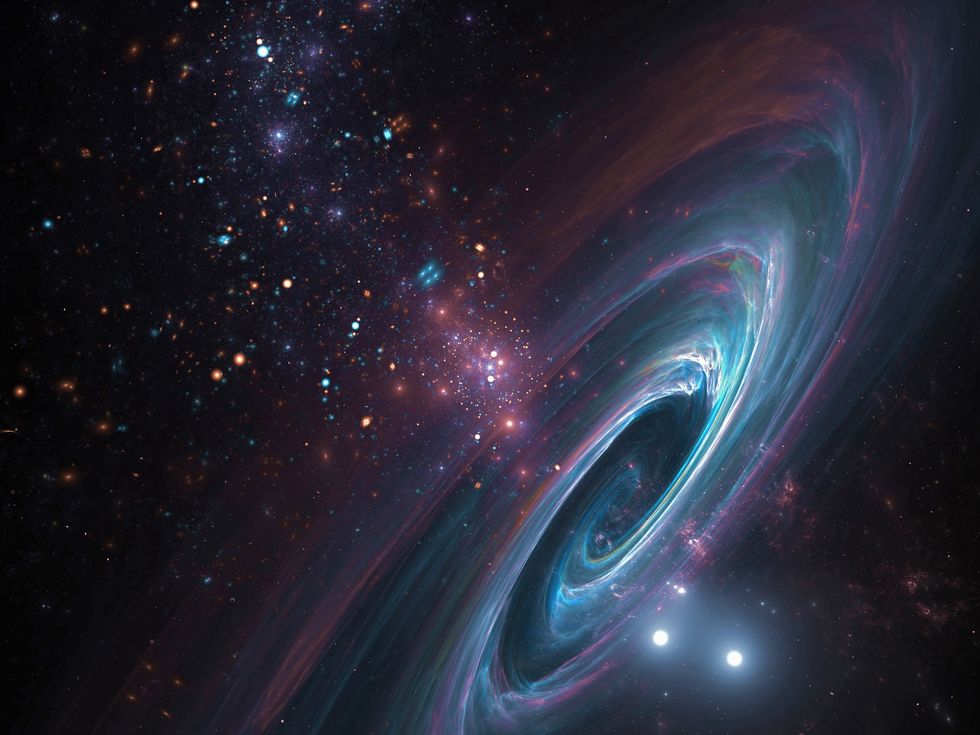Mysterious dark matter breakthrough as scientists crack radical new theory

Dark matter and dark energy make up 95 per cent of the universe
Don't Miss
Most Read
Scientists have spent two decades investigating the magnetic properties of muons, subatomic particles that pass through our bodies at a rate of fifty per second, in a quest that may have uncovered a crucial link between dark matter and ordinary matter.
The international research effort, which began with measurements at Brookhaven National Laboratory in 2006, has now led to an unexpected discovery.
While new supercomputer simulations have resolved a long-standing discrepancy between theoretical predictions and experimental results, they have simultaneously revealed a puzzling disagreement with electron-positron collision data.
Physicists now suggest this anomaly could be explained by a hypothetical "dark photon" particle.

Scientists have spent two decades investigating the magnetic properties of muons
|Getty
This theoretical particle might not only account for the conflicting measurements but could also illuminate how dark matter interacts with the ordinary matter that makes up our visible universe.
The breakthrough emerged from an extraordinary experimental journey that saw a massive electromagnet transported by barge down America's east coast and up the Mississippi River to Chicago's Fermilab facility.
There, researchers achieved unprecedented precision, measuring the muon's magnetism to one-and-a-half parts in ten billion.
Muons have previously been used to look for hidden chambers inside pyramids
LATEST DEVELOPMENTS:

Muons have previously been used to look for hidden chambers inside pyramids
| GETTYThe Muon g-2 Theory Initiative, comprising over 100 scientists globally, calculated contributions from more than 10,000 factors, including the Higgs boson discovered in 2012.
However, computing the strong nuclear force's contribution proved challenging.
The Budapest-Marseille-Wuppertal collaboration's supercomputer simulations, performed "blind" to avoid bias, ultimately aligned with experimental measurements.
This eliminated the anticipated evidence of new physics but created fresh tension with two-decade-old electron-positron collision data.

Dark matter and dark energy make up 95 per cent of the universe
|Getty
The Theory Initiative has now adopted the simulation results over electron-positron data in its official predictions, seemingly closing the door on new physics discoveries.
Yet the persistent disagreement with electron-positron experiments has sparked intense global scrutiny. Researchers propose that a "dark photon" could resolve this discrepancy.
"Not only could the dark photon explain the difference between the latest muon results and the electron-positron experiments, but (if it exists) it could also explain how dark matter relates to ordinary matter," according to the research findings.
This hypothetical particle represents a potential bridge between the mysterious dark matter that pervades the universe and the familiar matter we observe daily.
The implications extend far beyond resolving experimental conflicts, potentially offering the first concrete mechanism for understanding dark matter's fundamental nature.
Together, dark matter and dark energy make up 95 per cent of the universe.










